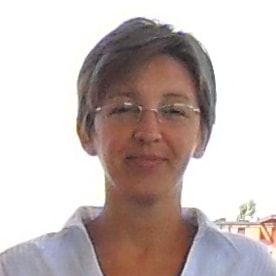Focus on the Salinization Issue in the Mediterranean Area
A special issue of Water (ISSN 2073-4441). This special issue belongs to the section "Hydrology".
Deadline for manuscript submissions: closed (31 October 2020) | Viewed by 22407
Special Issue Editor
Interests: water resources management and protection in the coastal plains, with a focus on water and nitrogen balance at basin scale and salinization processes; characterization and monitoring of dissolved contaminants in aquifers via different assessment methods; implementation of density-dependent groundwater flow models and reactive transport models
Special Issues, Collections and Topics in MDPI journals
Special Issue Information
Dear Colleagues,
Throughout the Mediterranean Region, recent studies highlight an increase in temperature, especially during summer, a decrease in precipitation and a certain change in the in-year precipitation pattern. These patterns are contributing to increasing the salinization of water resources. The Mediterranean Region is characterized by a variety of local climates and by a very complex geological and stratigraphical architecture. Moreover, the majority of the population is located along the coasts, with an increasing water demand. Thus, in the next years with the progressive loss of surface water resources, groundwater resources will be gradually more stressed, especially in coastal Mediterranean areas. This makes the Mediterranean area a good benchmark to test and validate scientific approaches to characterizing and better understanding the ongoing salinization trends of water resources.
The aim of this Special Issue of Water is to publish papers that describe the state of the art of surface waters and groundwater salinization in watersheds, with emphasis on the Mediterranean area. In detail, the goal of this Special Issue is to deliver a limited number of papers which describe the key features of aquifer, wetland, lake and river salinization and new challenges that need to be tackled. Particular importance will be given to papers employing novel geochemical and geophysical approaches, numerical modelling and their conjunctive use to monitor, assess and quantify relevant processes in aquifer salinization. This Special Issue aims to cover, without being limited to, the following areas: Multidisciplinary approaches that allow to distinguish between actual saltwater intrusion from paleo-salinization; Interaction between coastal wetlands and groundwater bodies; Numerical transport models that account for solutes’ variable density in saturated/unsaturated media; and the related scenario modelling to quantify future impacts of climate changes on groundwater resources.
Prof. Micòl Mastrocicco
Guest Editor
Manuscript Submission Information
Manuscripts should be submitted online at www.mdpi.com by registering and logging in to this website. Once you are registered, click here to go to the submission form. Manuscripts can be submitted until the deadline. All submissions that pass pre-check are peer-reviewed. Accepted papers will be published continuously in the journal (as soon as accepted) and will be listed together on the special issue website. Research articles, review articles as well as short communications are invited. For planned papers, a title and short abstract (about 100 words) can be sent to the Editorial Office for announcement on this website.
Submitted manuscripts should not have been published previously, nor be under consideration for publication elsewhere (except conference proceedings papers). All manuscripts are thoroughly refereed through a single-blind peer-review process. A guide for authors and other relevant information for submission of manuscripts is available on the Instructions for Authors page. Water is an international peer-reviewed open access semimonthly journal published by MDPI.
Please visit the Instructions for Authors page before submitting a manuscript. The Article Processing Charge (APC) for publication in this open access journal is 2600 CHF (Swiss Francs). Submitted papers should be well formatted and use good English. Authors may use MDPI's English editing service prior to publication or during author revisions.
Keywords
- water quality
- climate change
- vertical profile
- coastal areas
- geochemical processes





